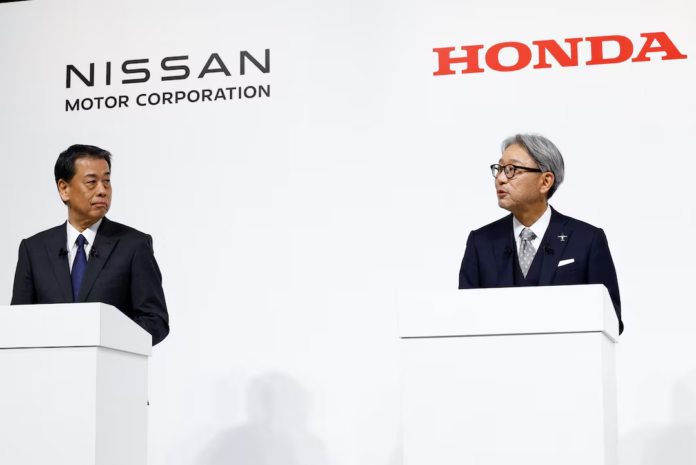Nissan and Honda ended merger talks on Thursday, halting plans for a $60 billion tie-up.
Sources cited by Reuters said the deal collapsed after Honda proposed making Nissan a subsidiary. The two automakers will continue collaborating on technology despite differences over the merger structure.
Nissan CEO Makoto Uchida met Honda CEO Toshihiro Mibe last week to formally end discussions.
Mibe said merging would have involved “quick pain” but was ultimately dropped due to concerns over delays. He called the failure of the discussions “disappointing” and said Honda would consider partnerships beyond Nissan and Mitsubishi Motors.
Nissan, facing declining sales in China and the U.S., cut its full-year forecast by 70% in November and announced a turnaround plan to reduce global capacity by 20% and cut 9,000 jobs. Honda sought deeper cost reductions, but Nissan refused to close factories, including those in Tennessee, Mexico, and Britain.
On January 25, Nissan executive Hideyuki Sakamoto announced a new EV plant in Kyushu, confirming no capacity cuts there. The next day, Honda formally proposed making Nissan a subsidiary, which Nissan executives rejected as “outrageous.”
Renault, Nissan’s largest shareholder, opposed Honda’s proposal, calling it a “takeover without a control premium” and stating it would “vigorously defend” its interests.
Honda reported a 5% increase in third-quarter operating profit to 397.3 billion yen ($2.58 billion) and maintained its full-year forecast at 1.42 trillion yen but lowered its global sales outlook to 3.75 million vehicles. Honda sold 3.8 million vehicles in 2024, with 42% of sales in North America and 22% in China.
Nissan reported a 78% drop in third-quarter operating profit to 31.1 billion yen and cut its full-year profit forecast by 20% to 120 billion yen. The company plans to close a plant in Thailand by June and two more later.
It aims to cut costs by 400 billion yen ($2.6 billion) by fiscal 2026, including manufacturing expense reductions. Nissan also announced a management restructuring, cutting top positions by 20%.
Honda is considering partnerships beyond Nissan and Mitsubishi Motors. Nissan is also exploring new alliances, including Taiwan’s Foxconn. Foxconn Chairman Young Liu said his company may take a stake in Nissan but is focused on cooperation. Foxconn’s EV business is led by former Nissan executive Jun Seki.
Nissan’s market capitalization is nearly five times smaller than Honda’s 7.5 trillion yen ($48.6 billion). A decade ago, both companies were valued at around 4.6 trillion yen.
Nissan’s largest market is North America, accounting for 38% of sales, followed by China at 21%. Honda’s top market is also North America, with 42% of sales.
Both automakers face risks from U.S. tariffs on vehicles imported from Mexico. Nissan, which operates eight factories in China through its joint venture with Dongfeng Motor, has already suspended production at its Changzhou plant.
Nissan aims for EVs and hybrids to make up 60% of sales by 2030, while Honda plans to produce 2 million EVs annually by 2030 and transition fully to EVs and fuel cell vehicles by 2040.






















